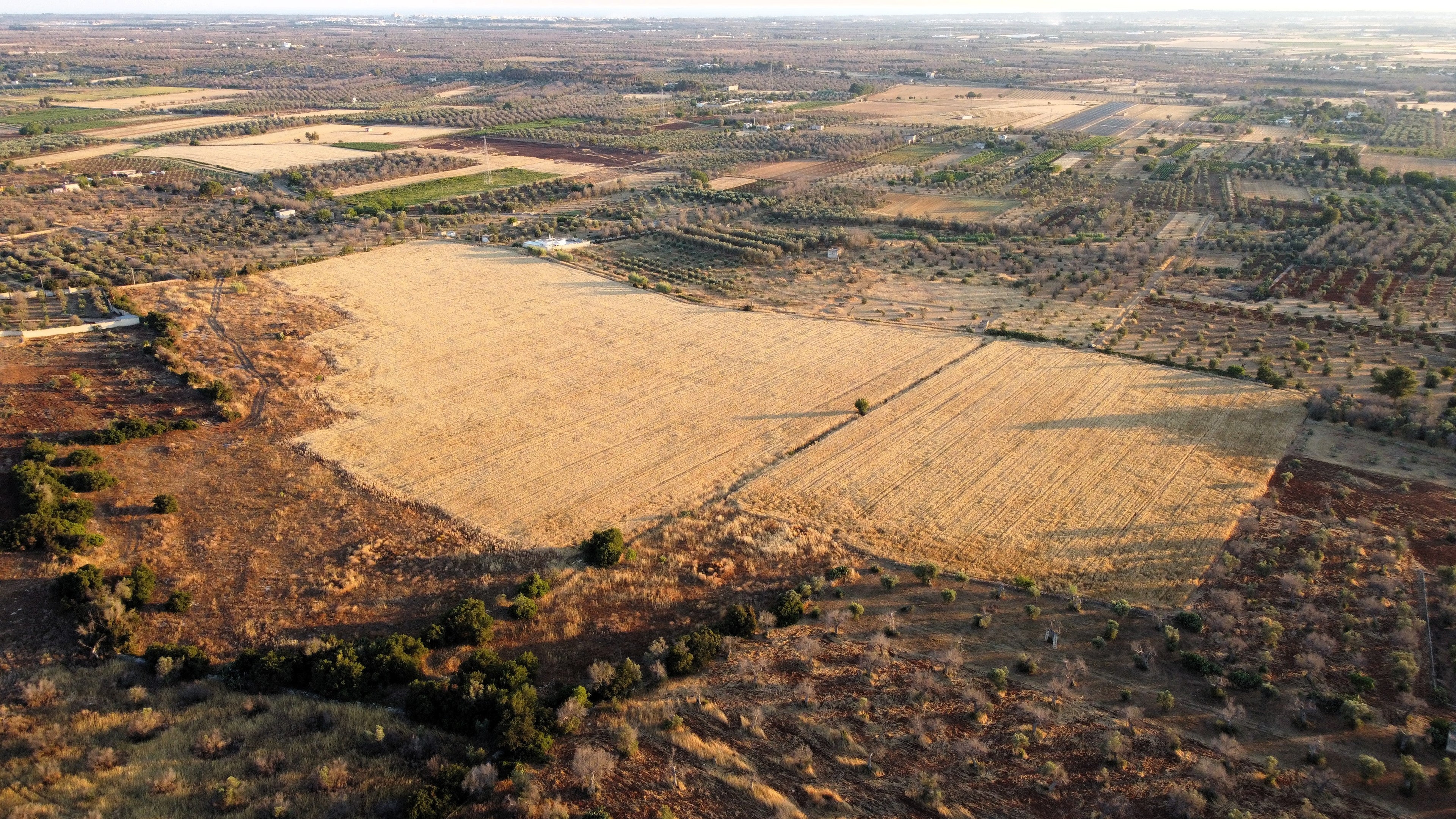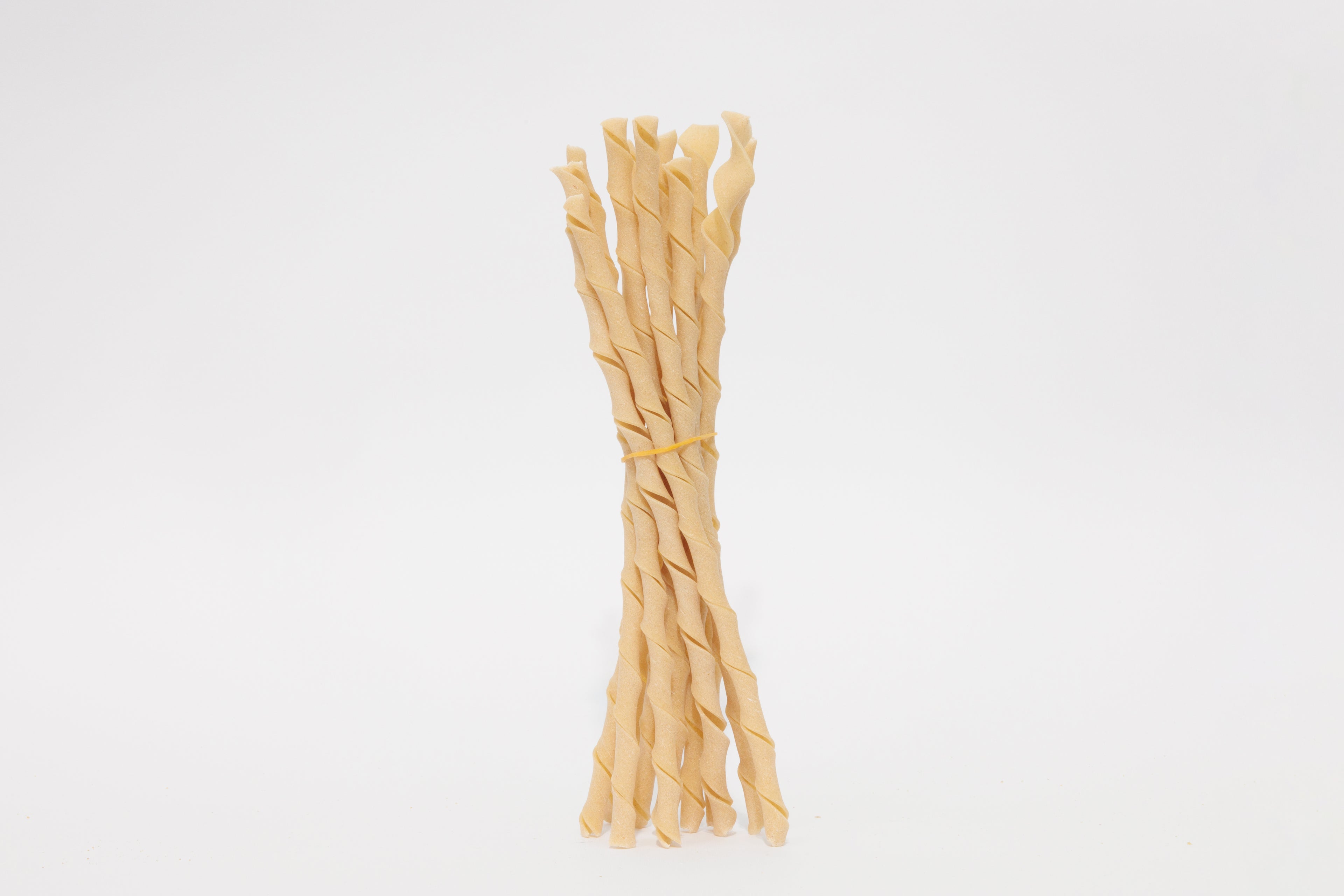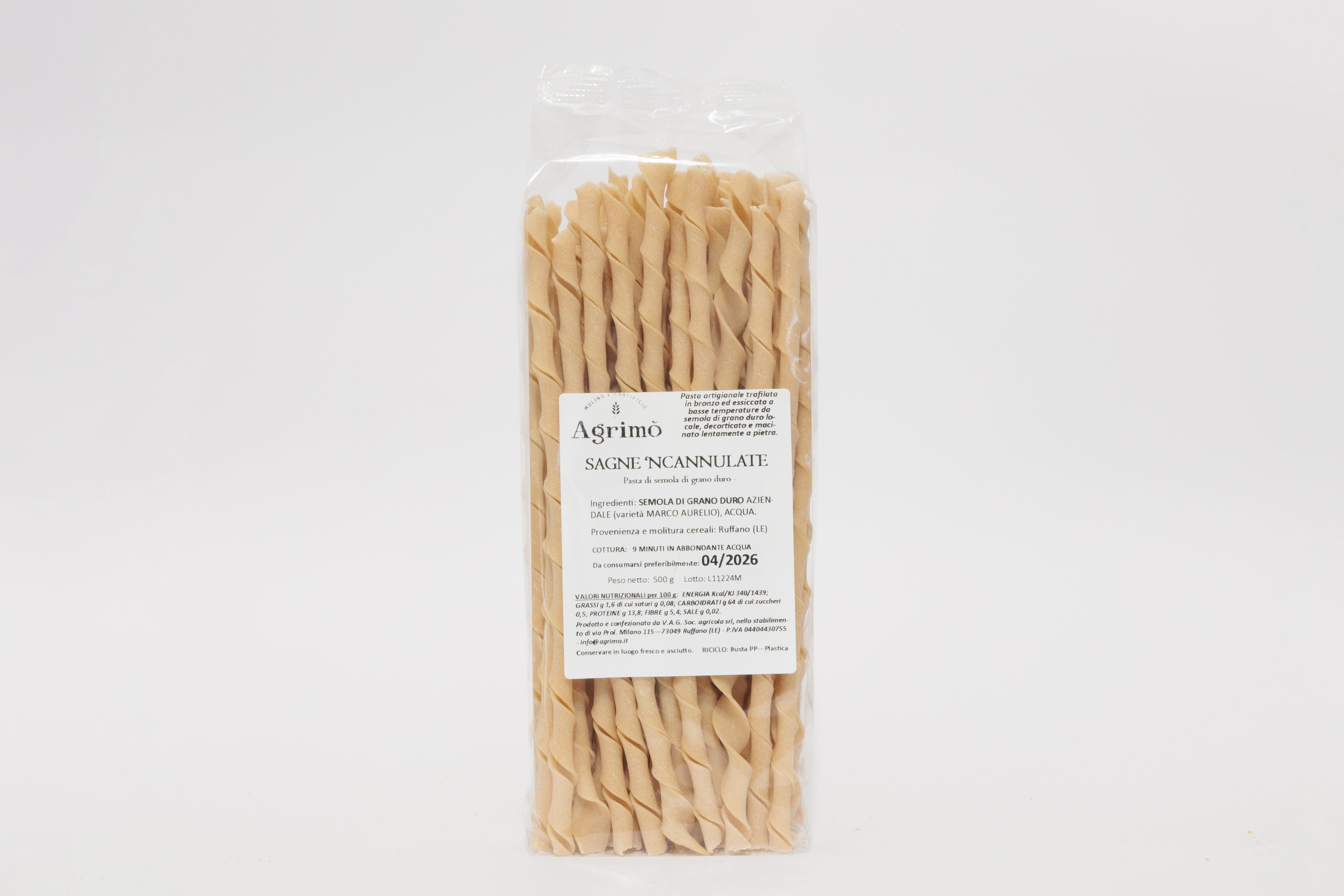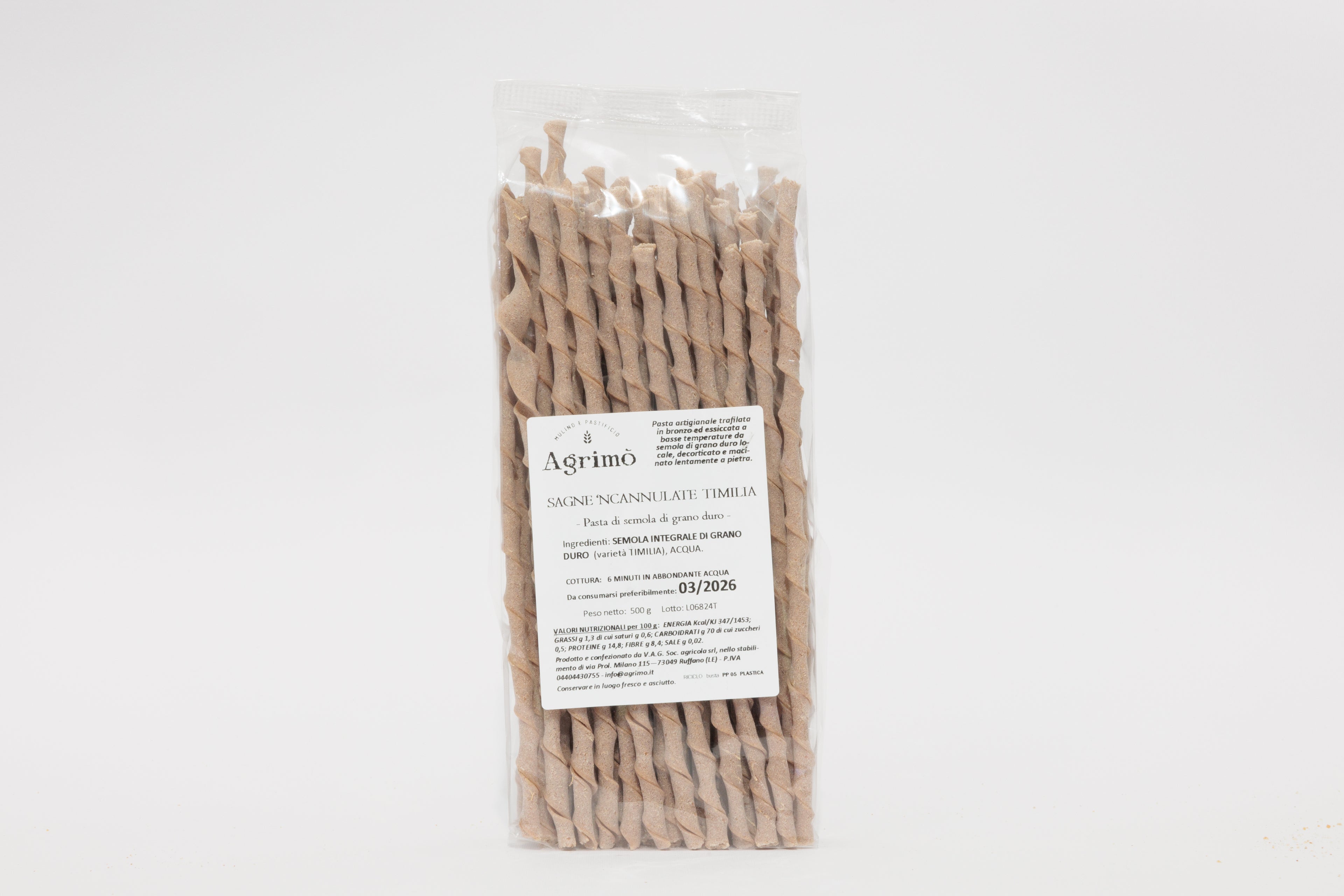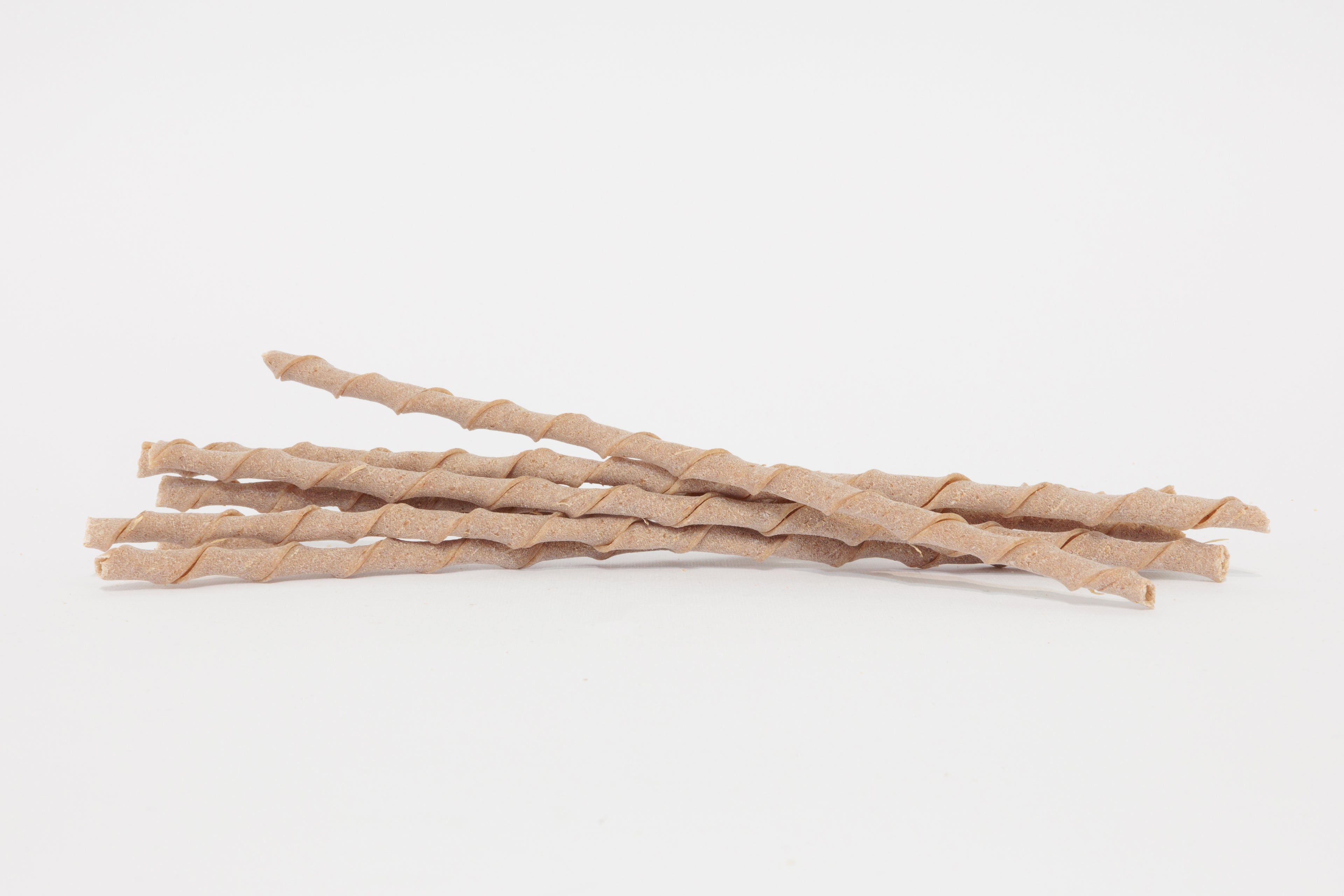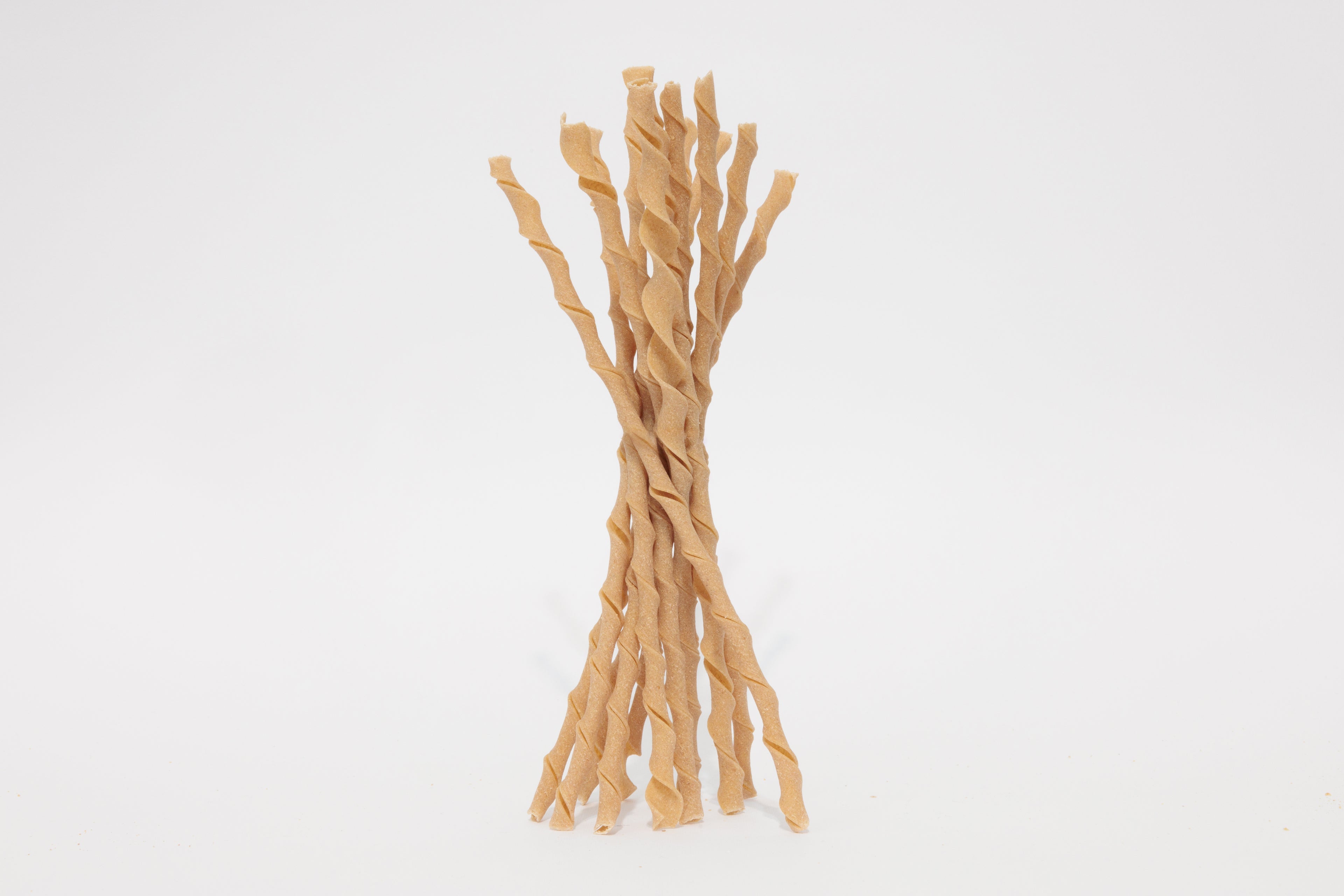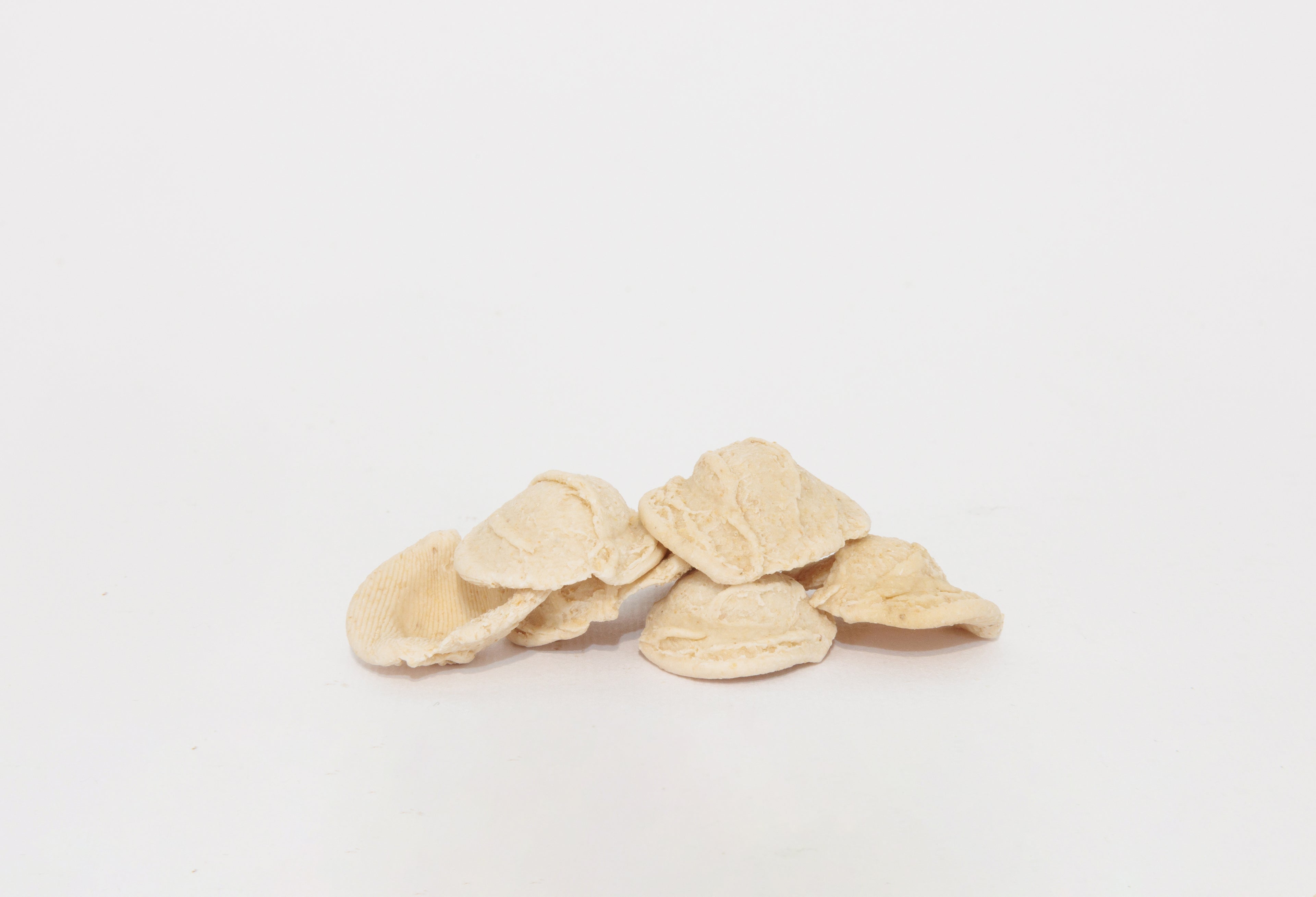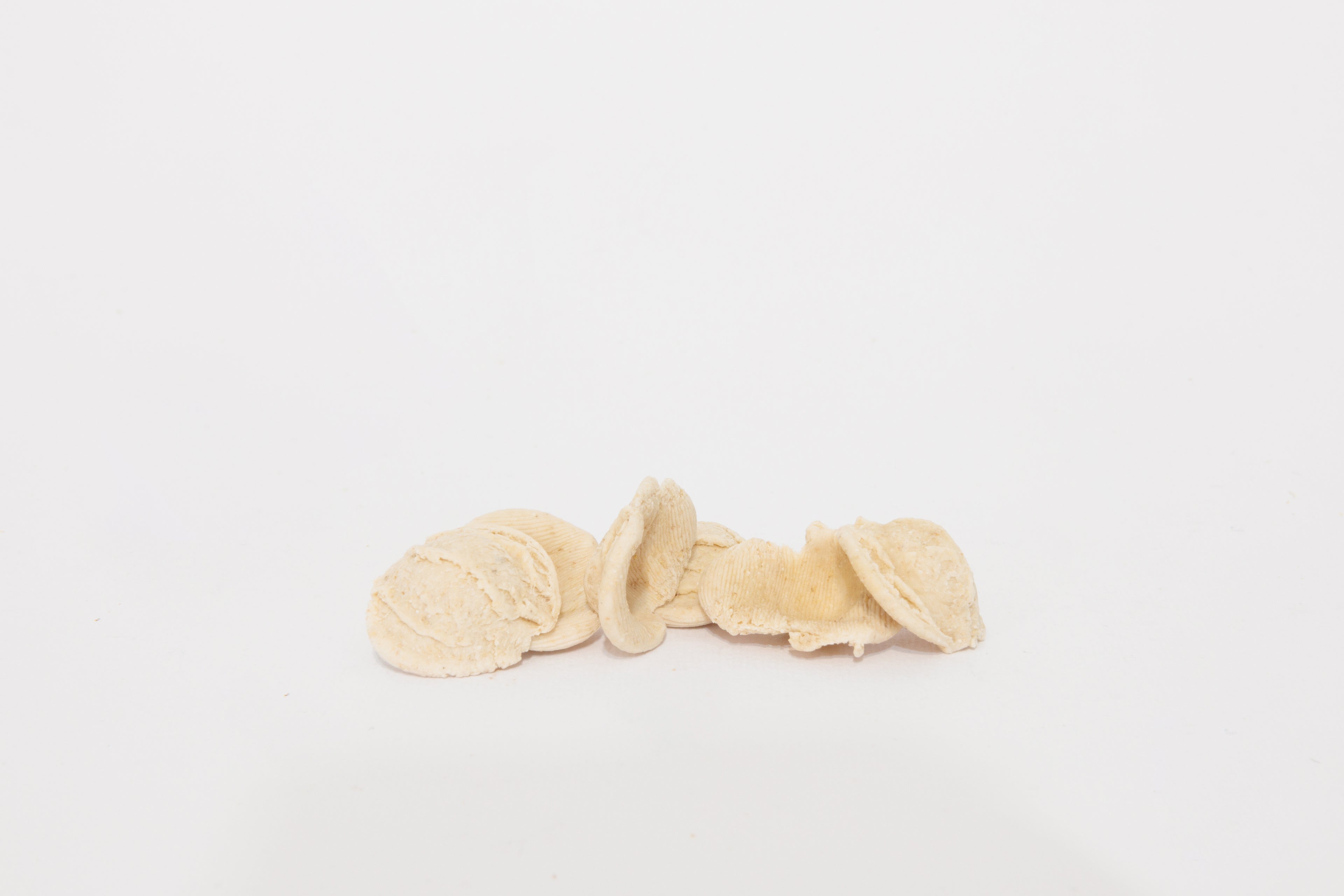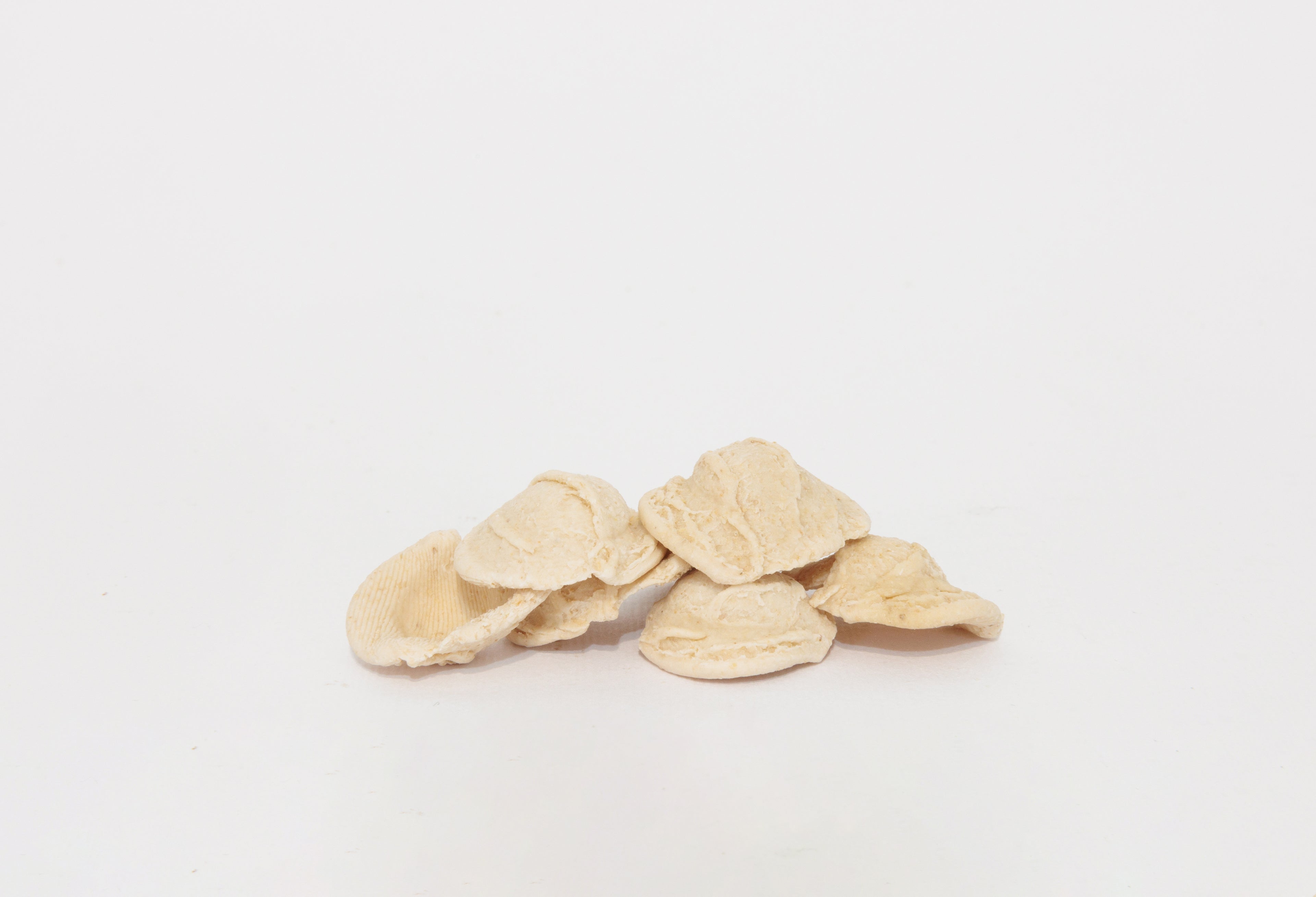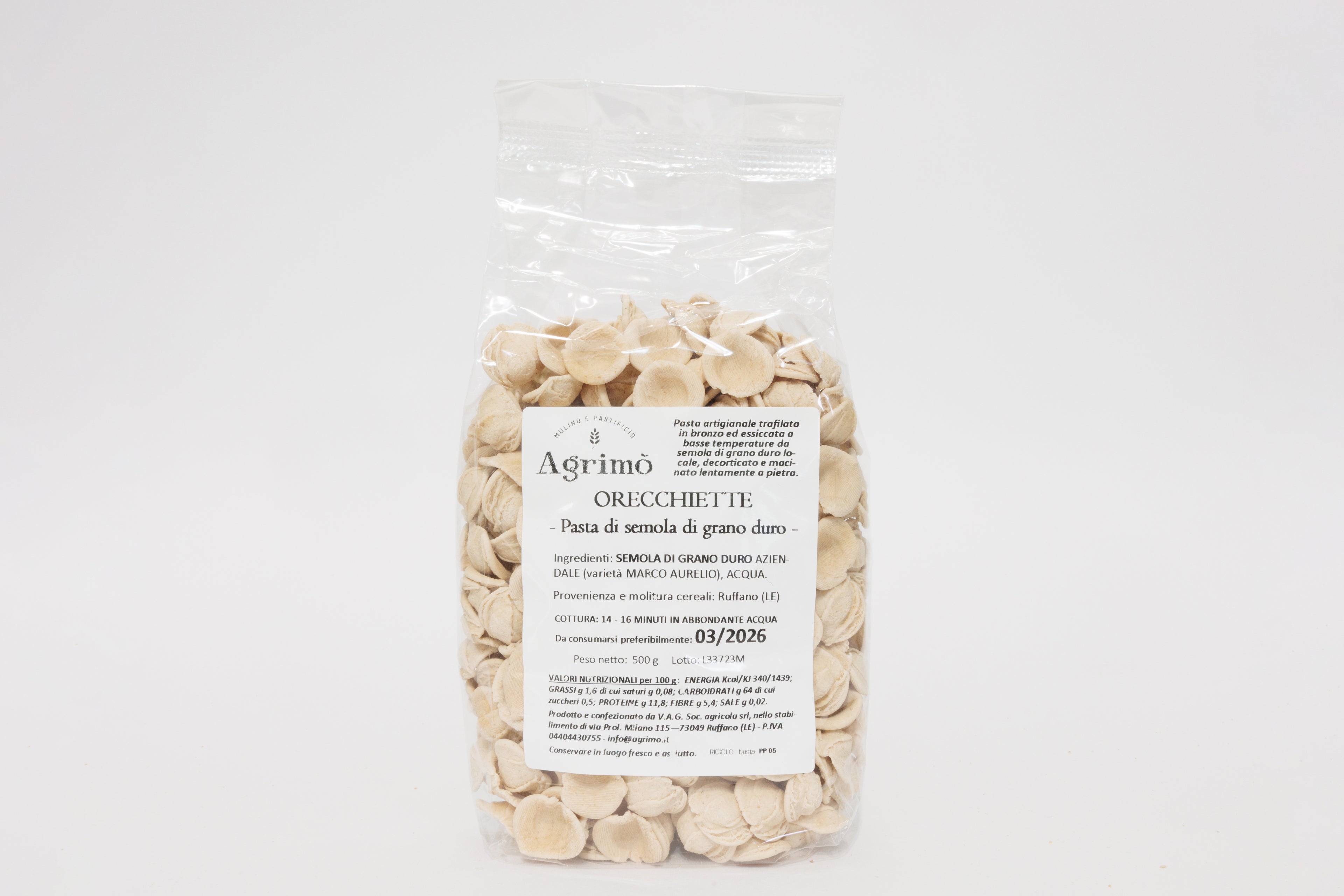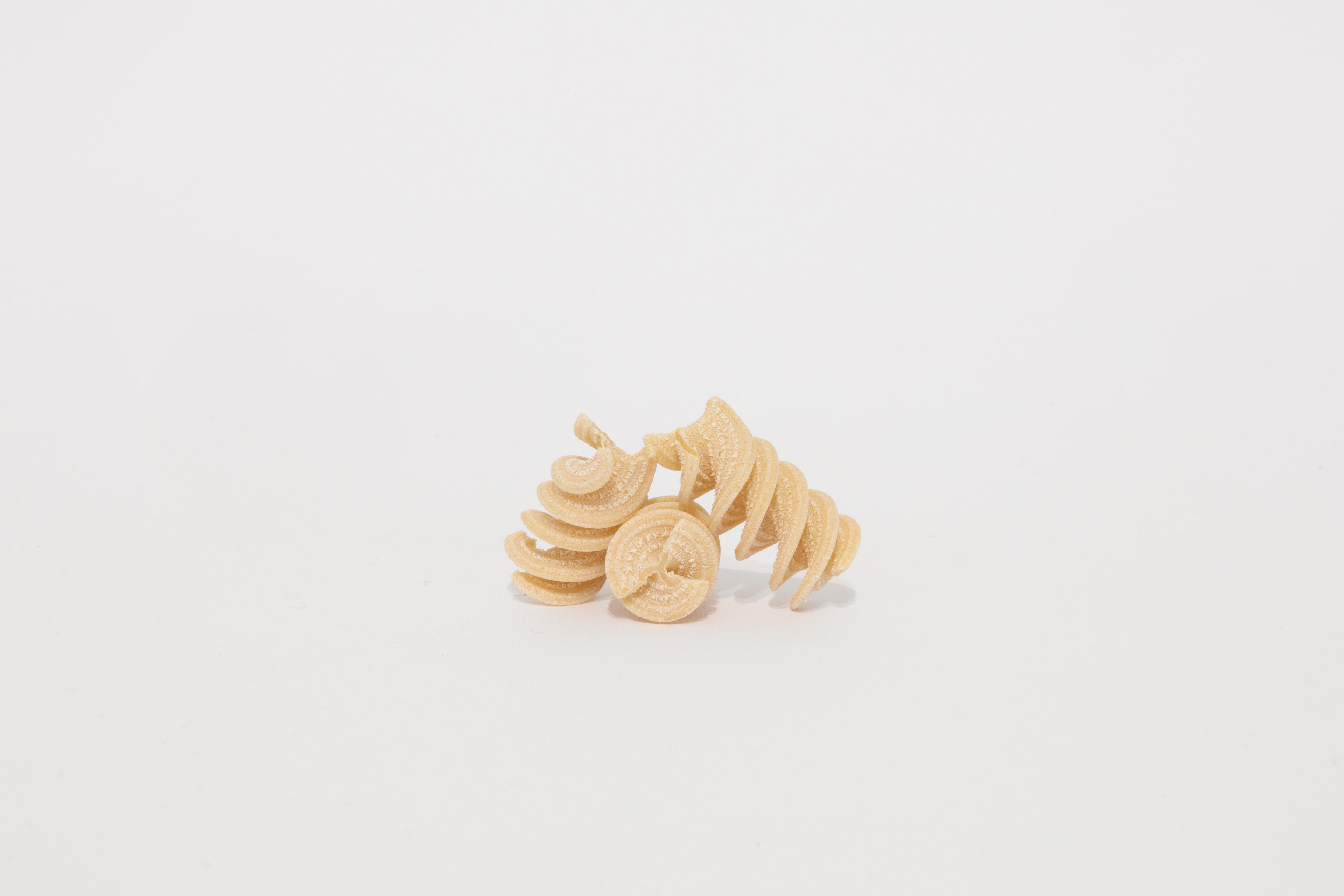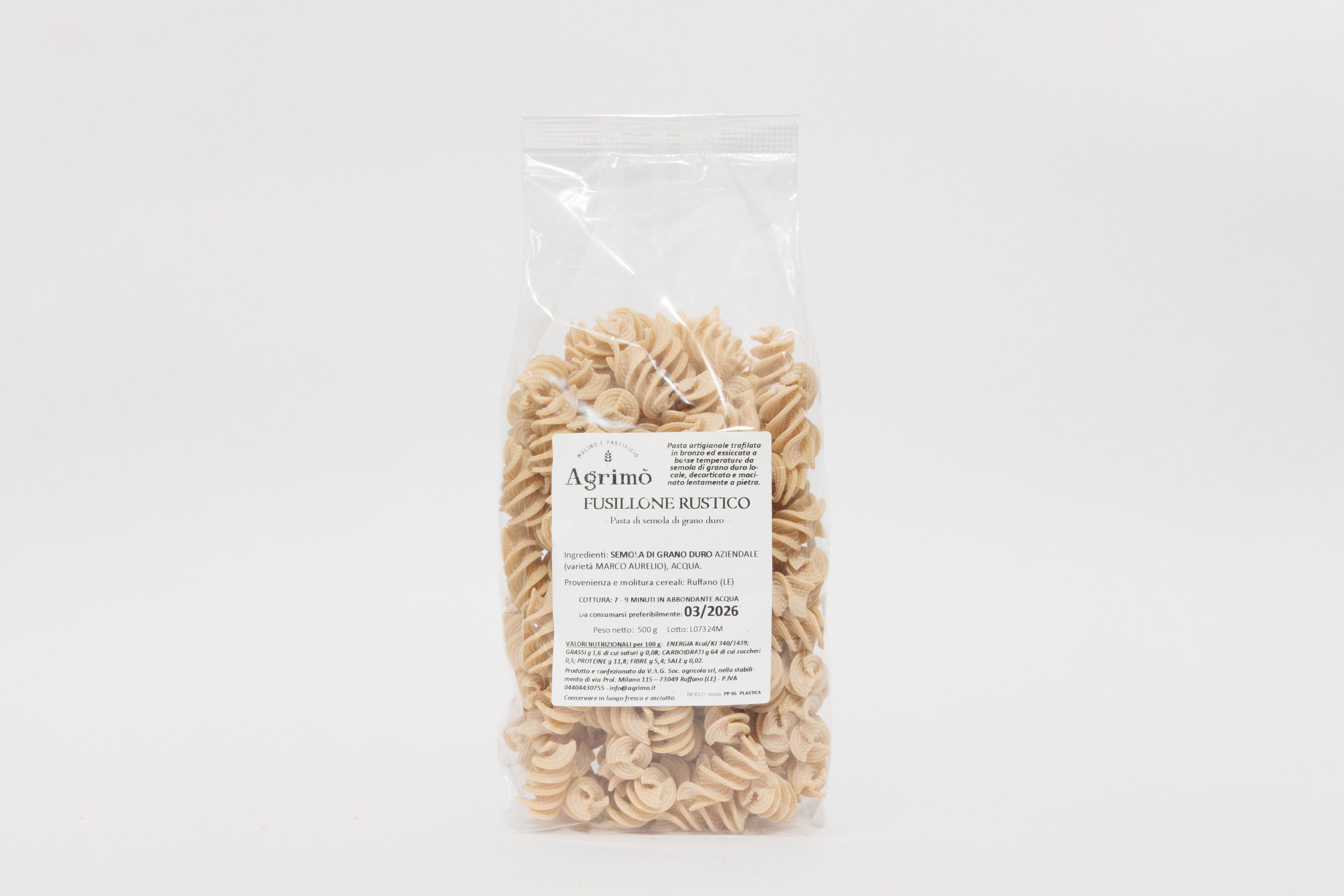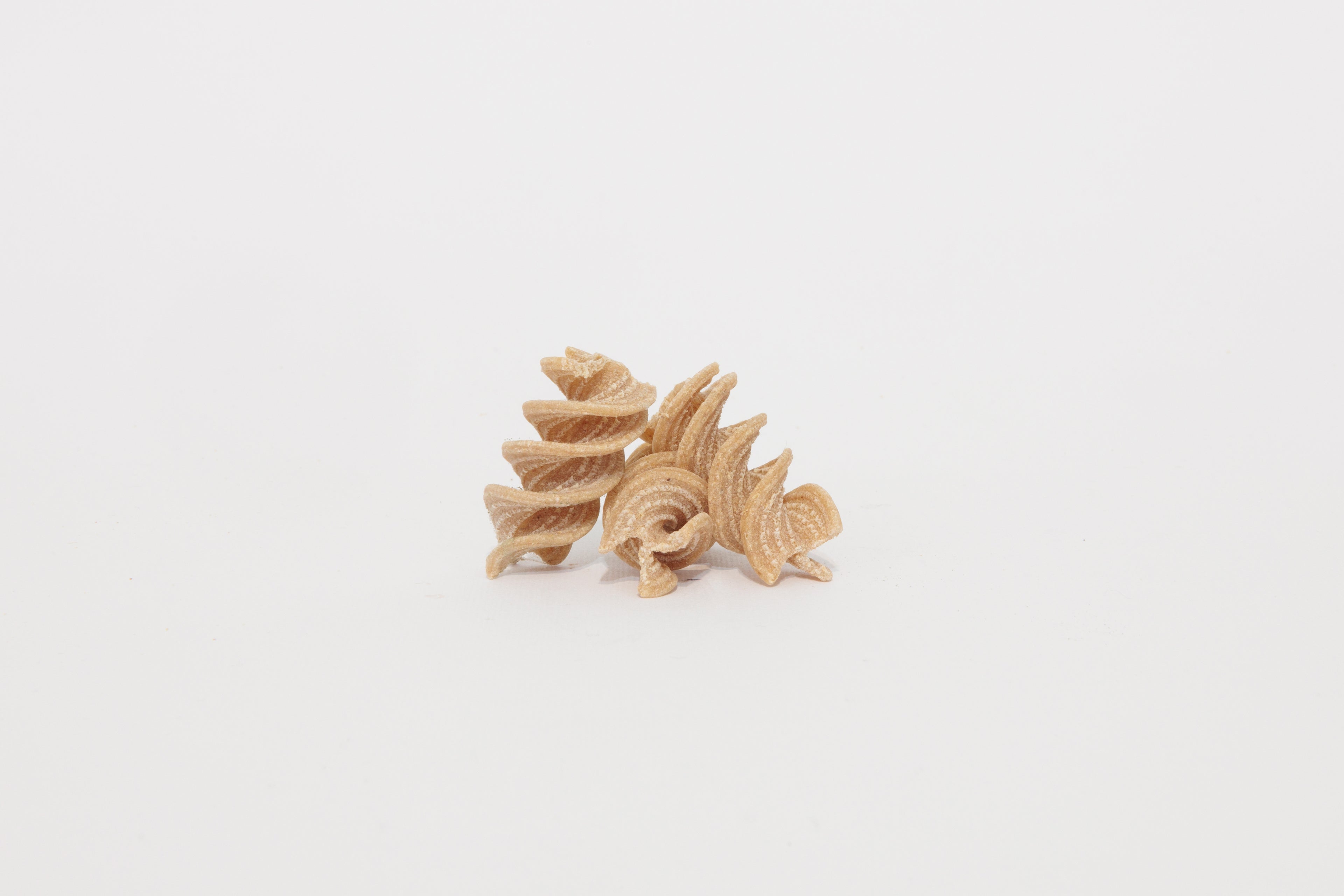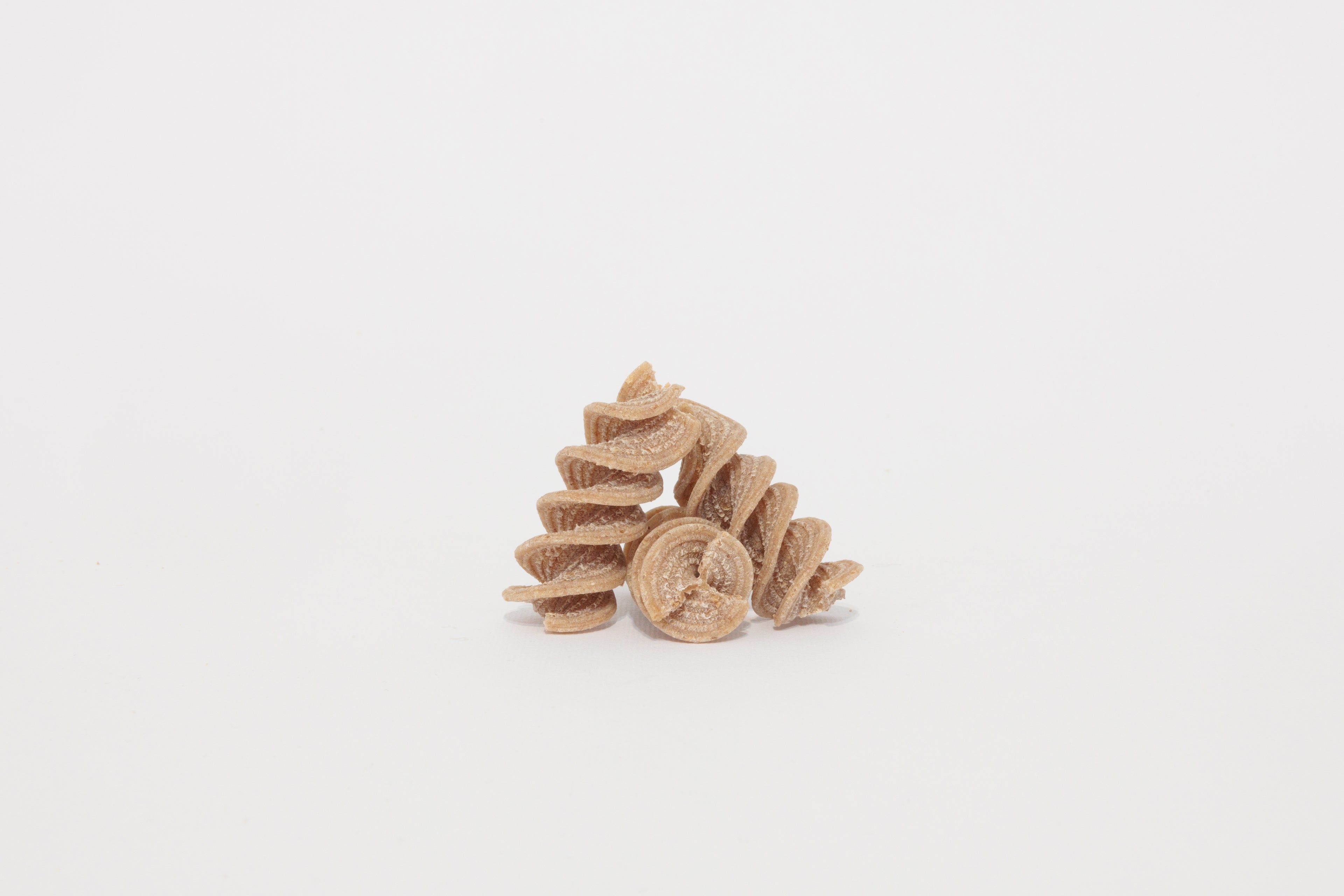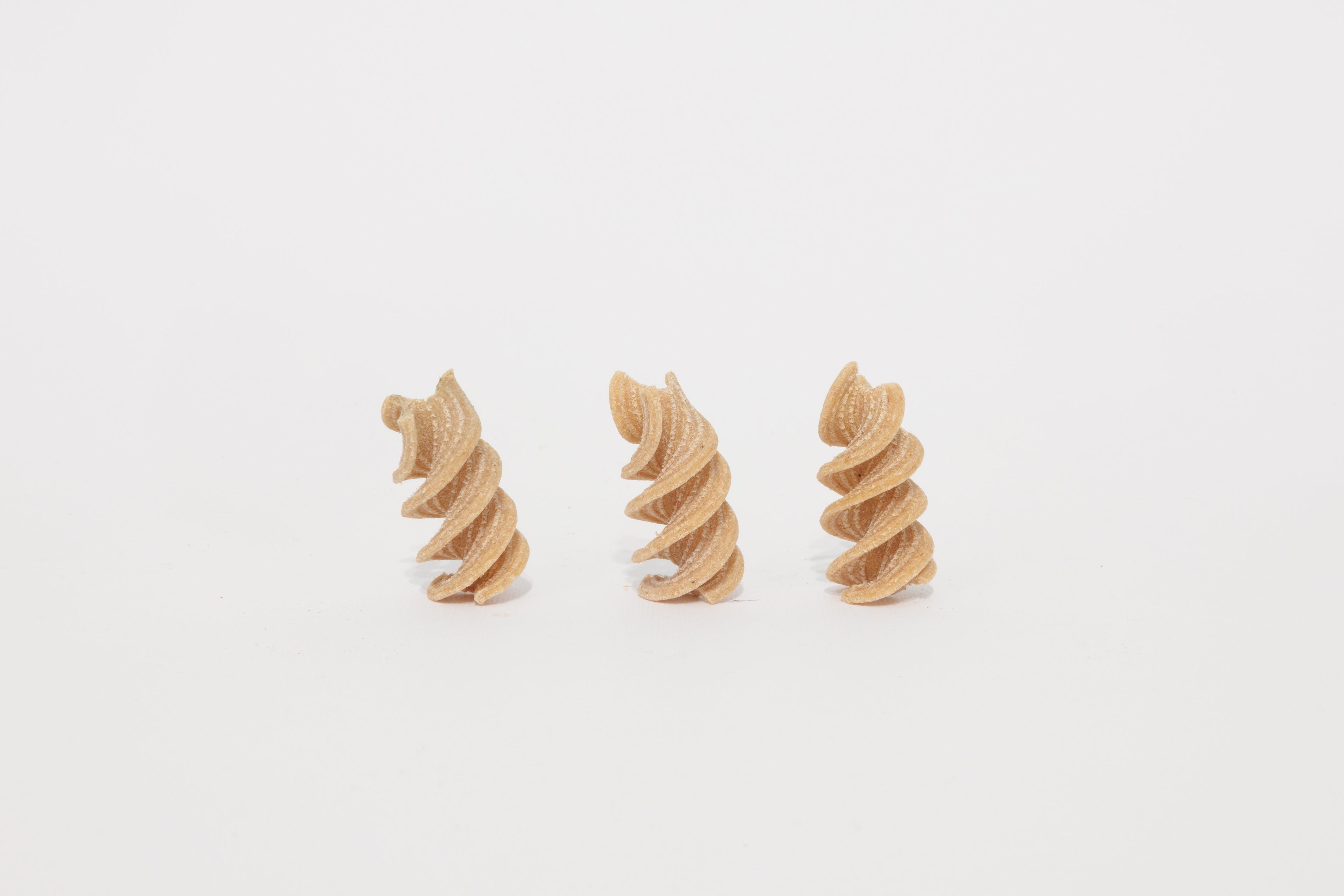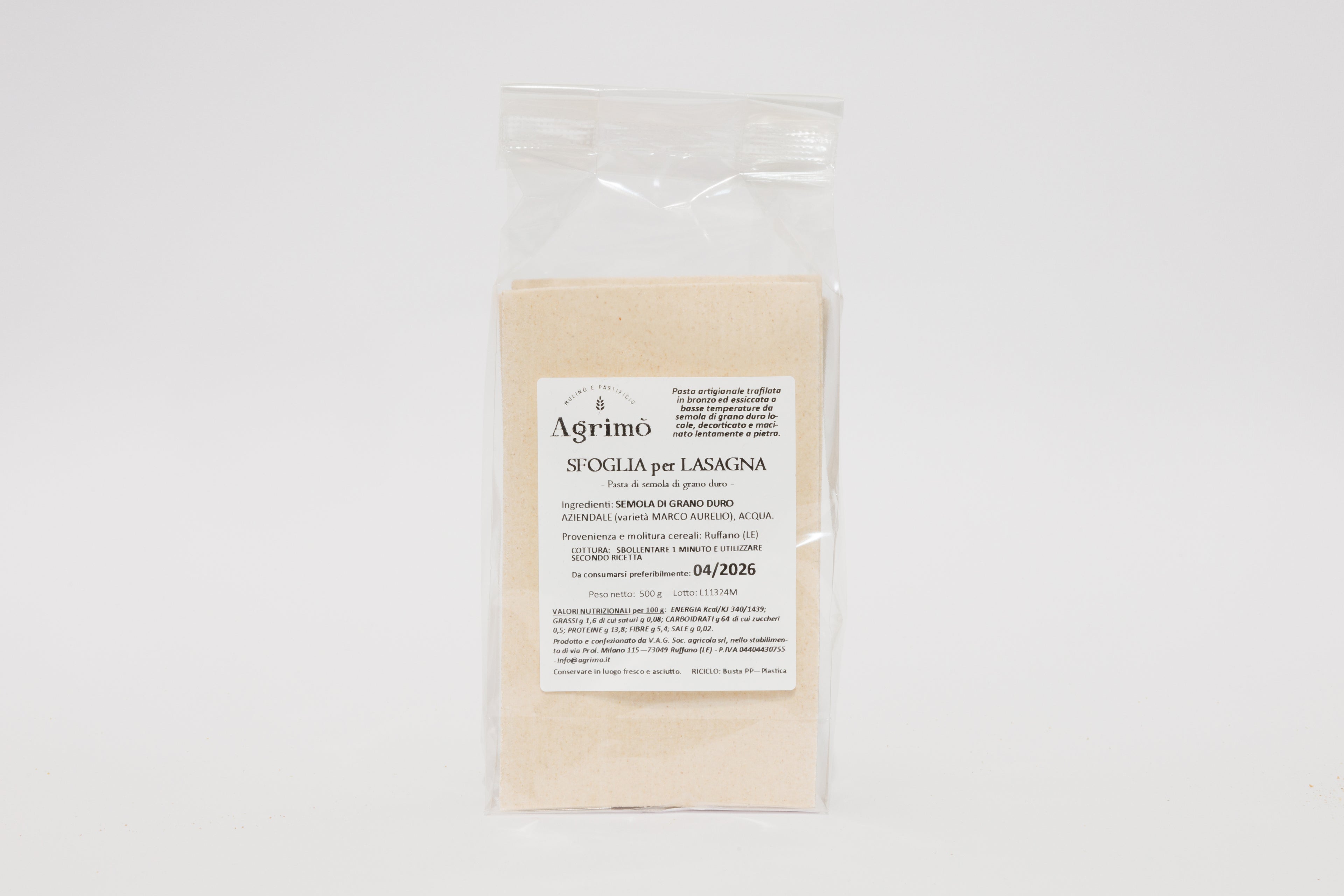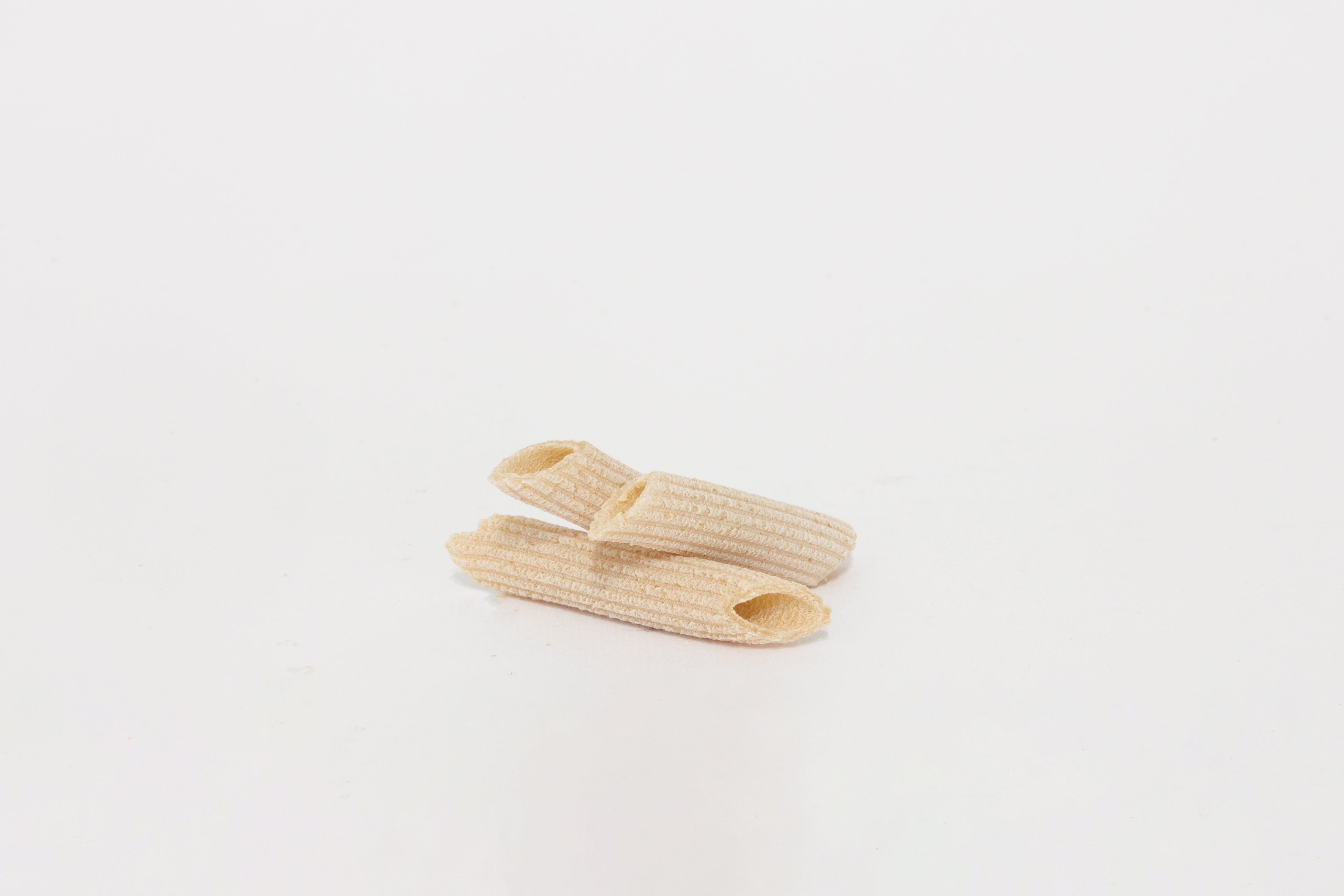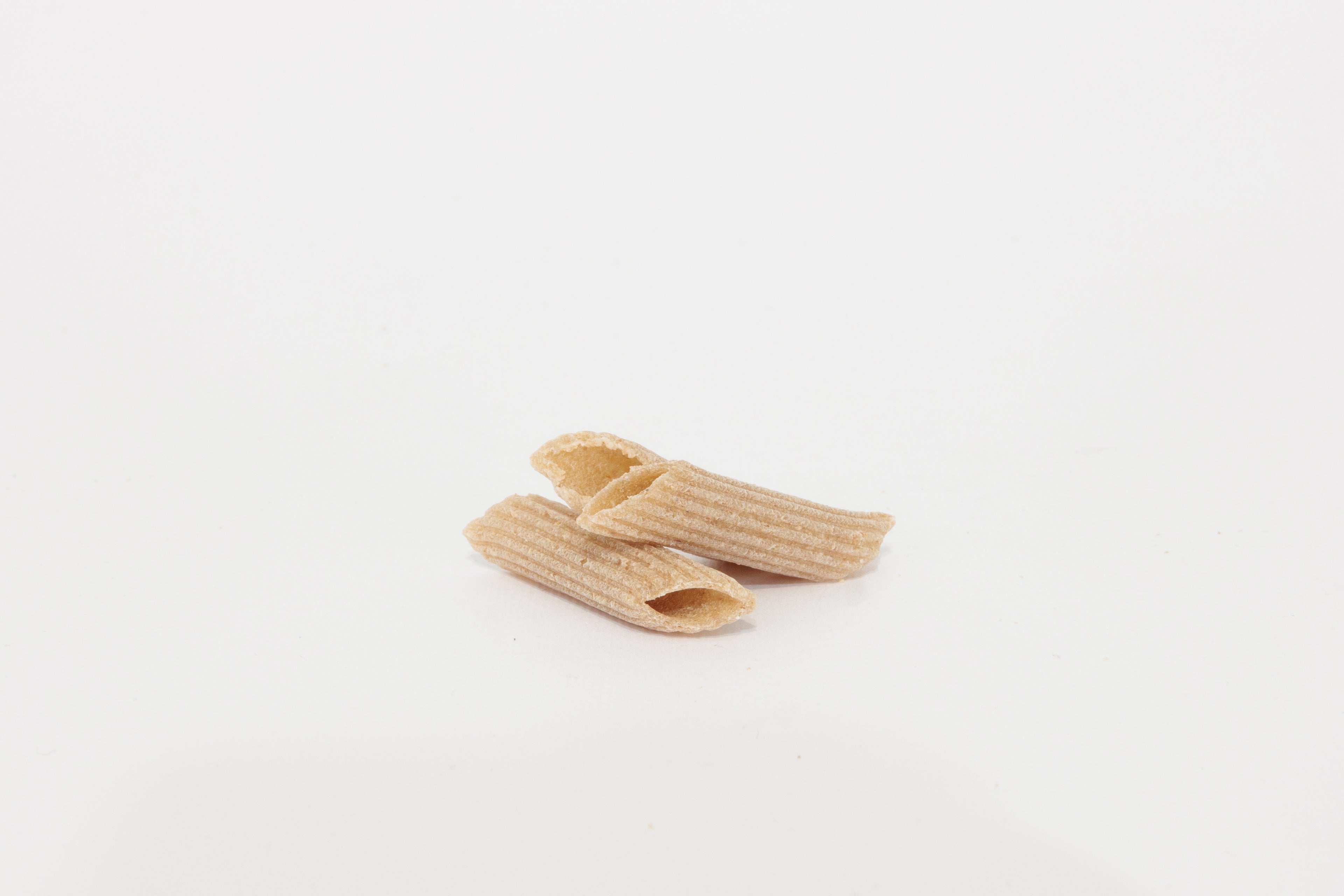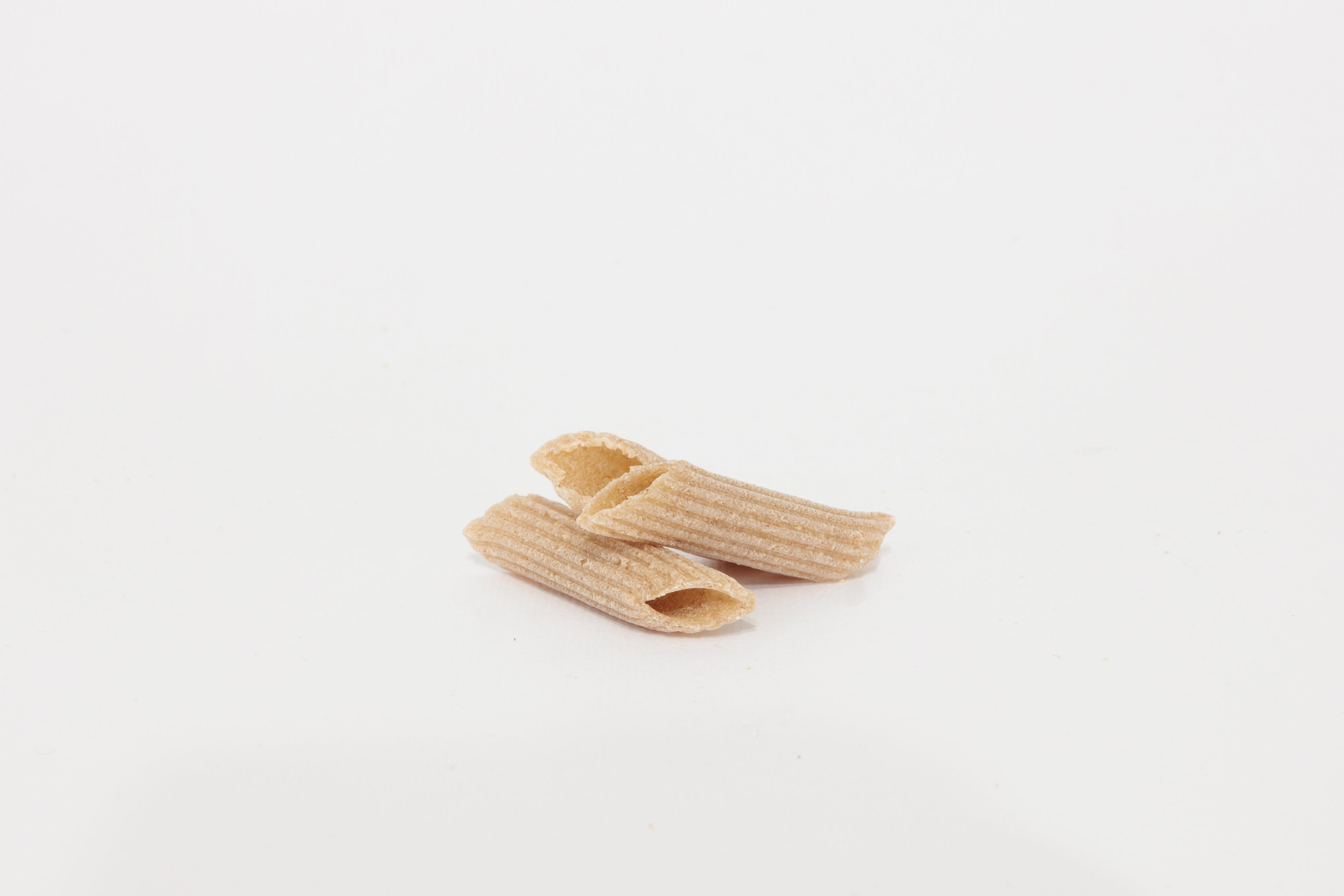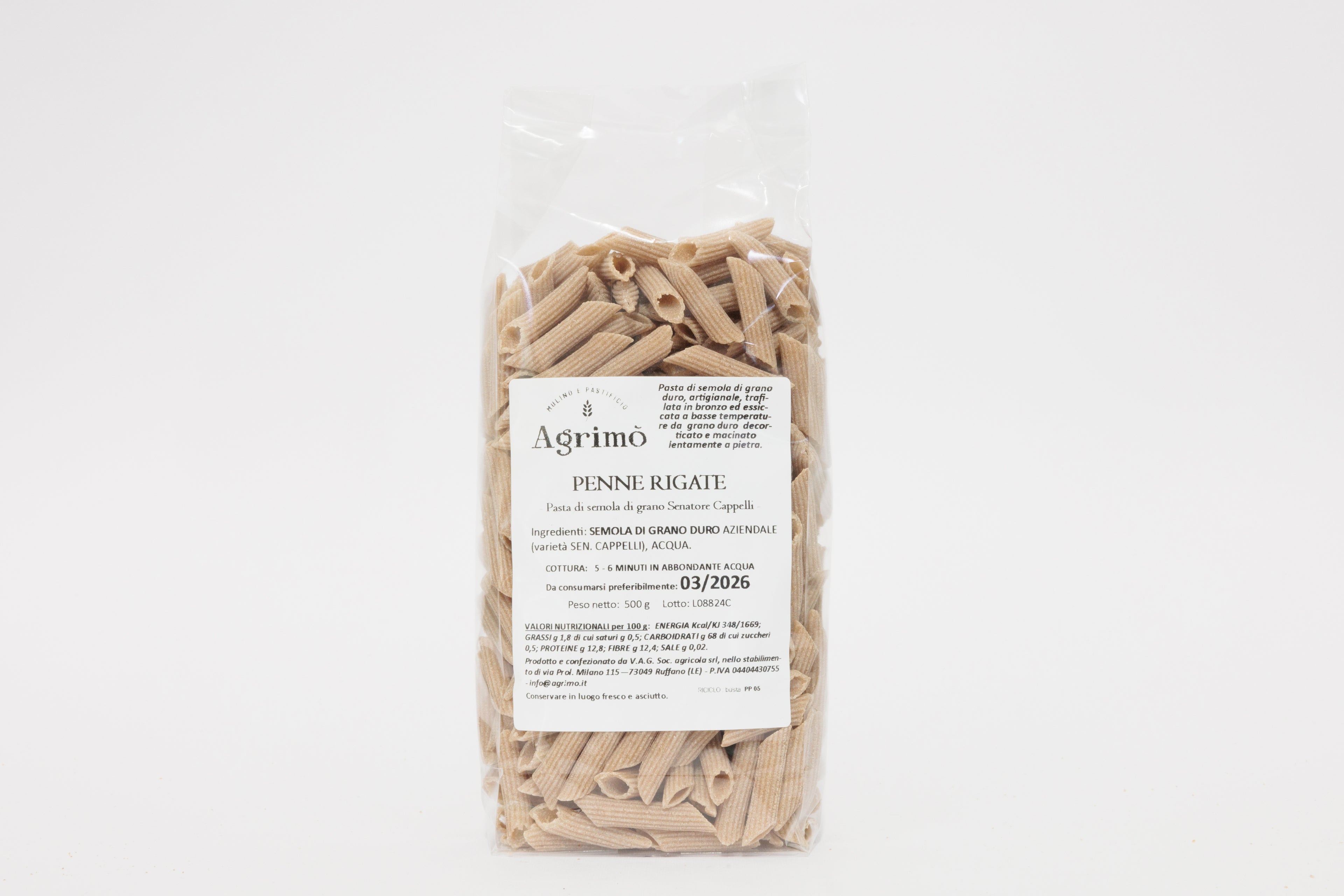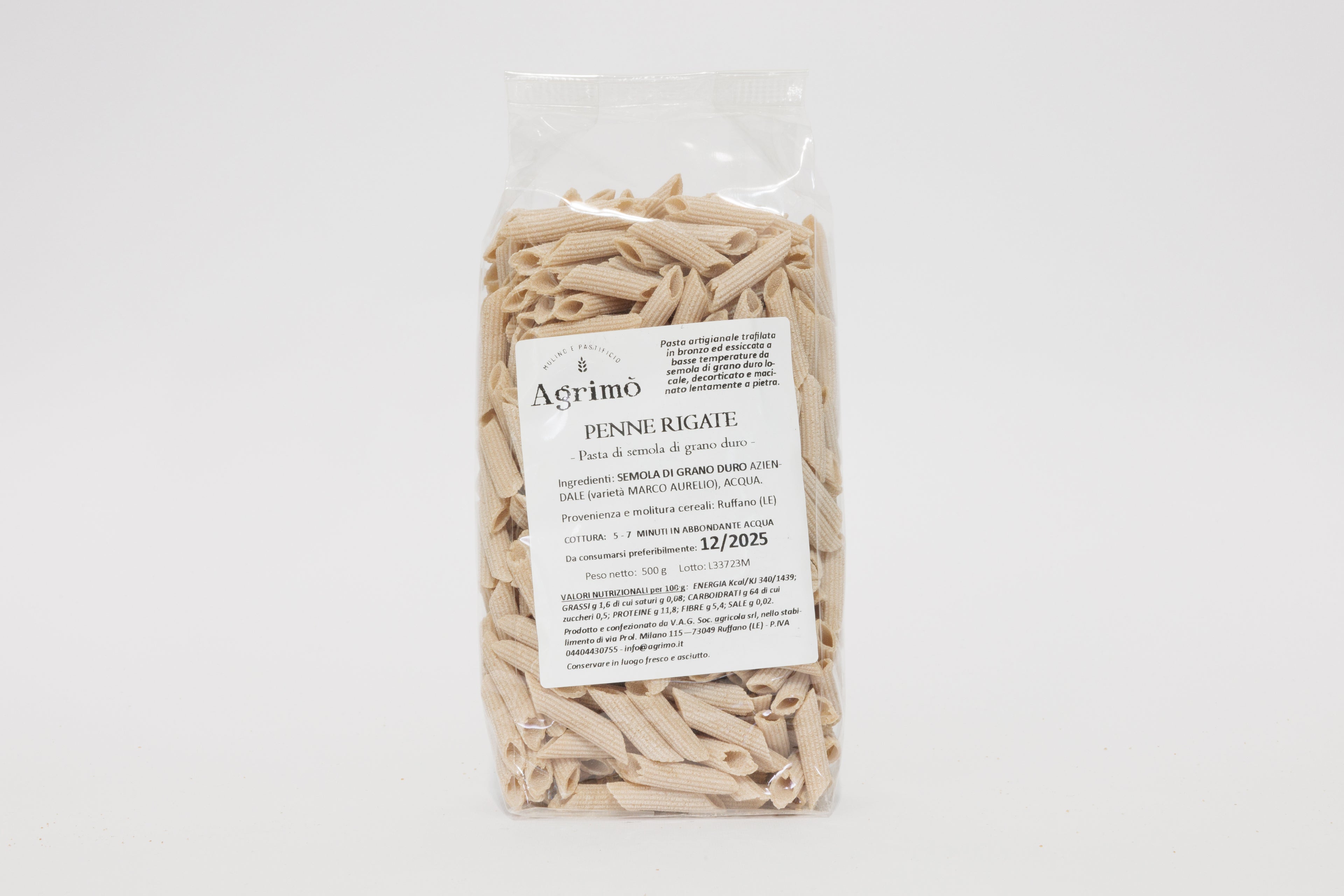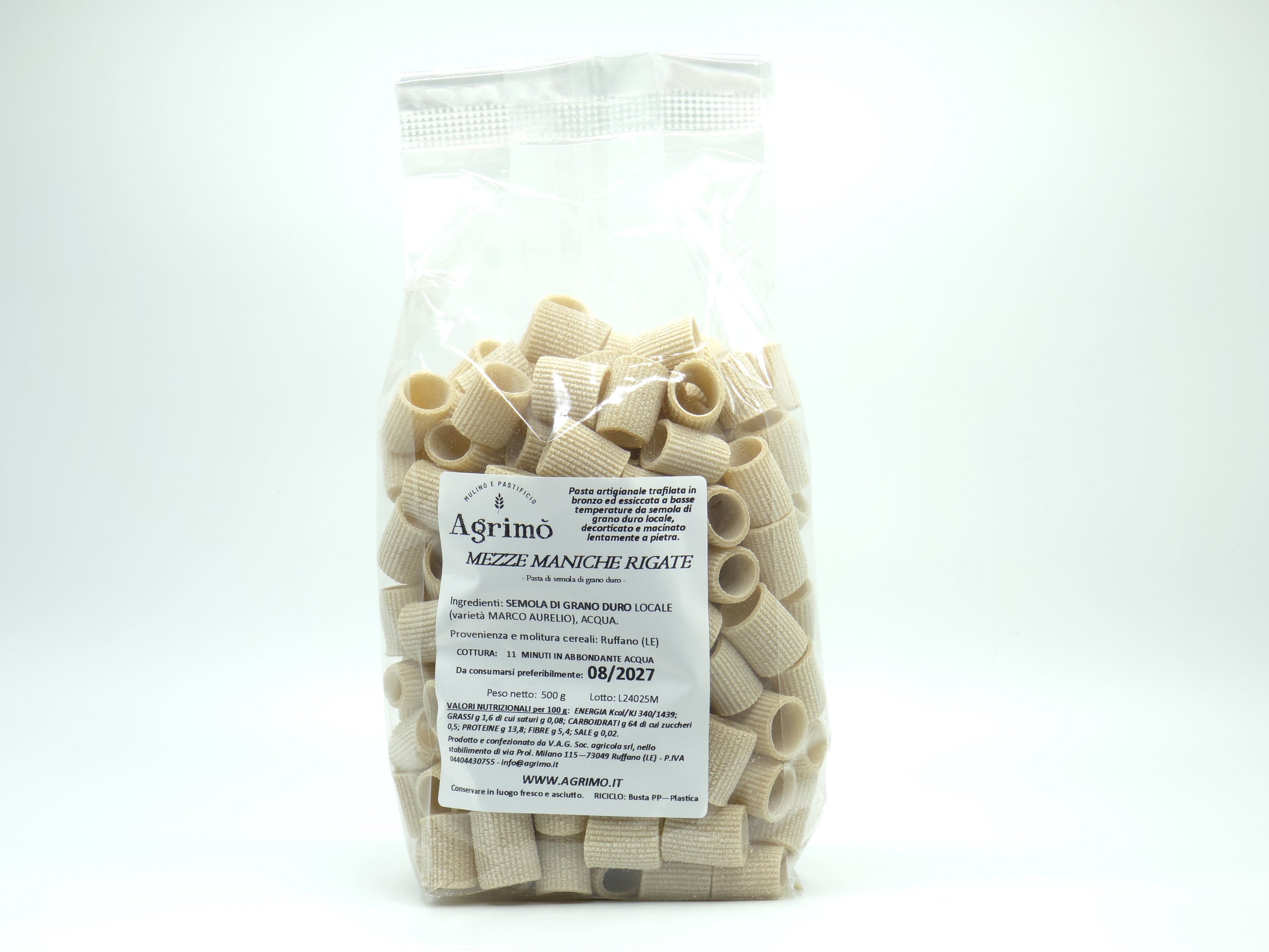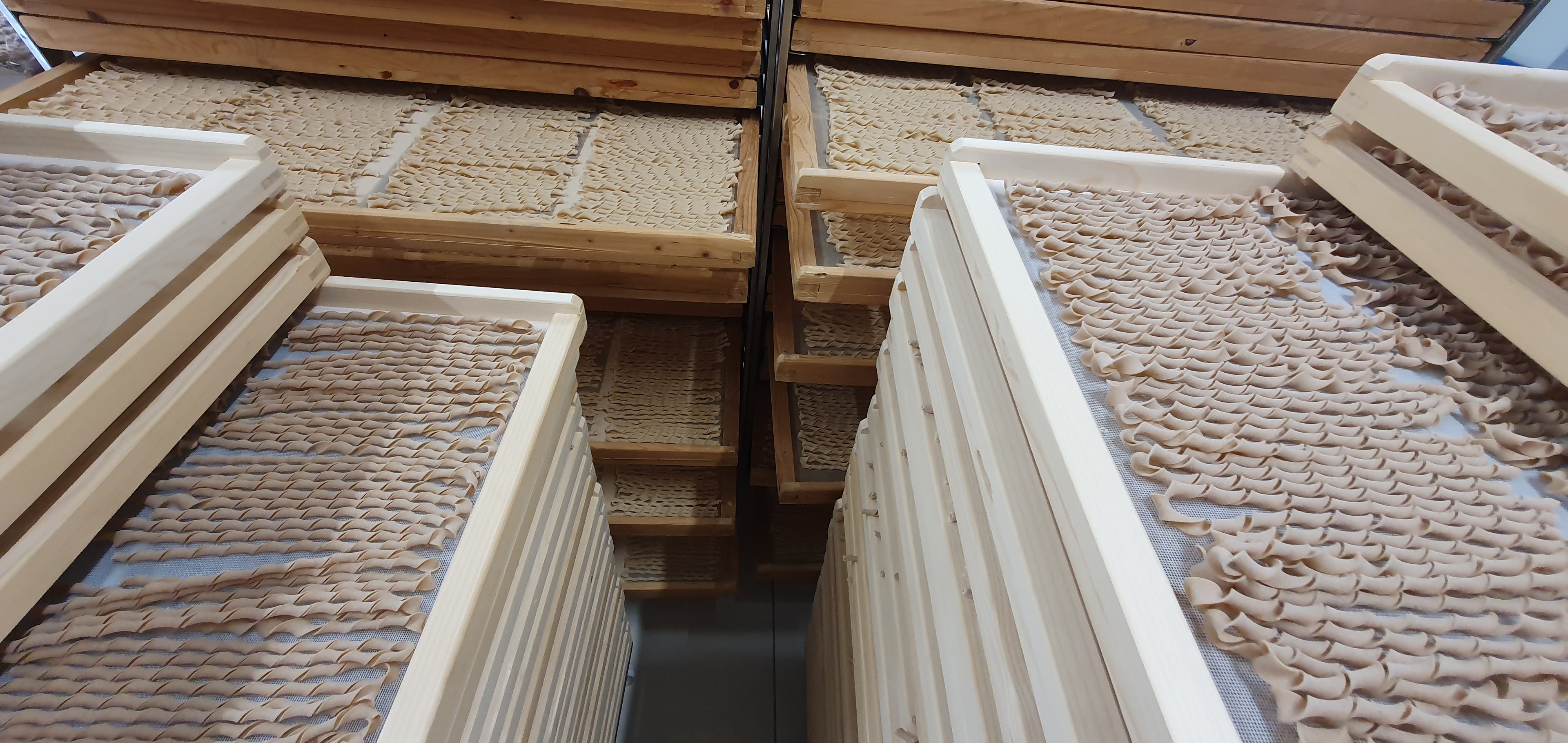
The Pasta Factory Agrimò
We transform our semolina into artisanal bronze-drawn pasta and dry it at low temperatures for 20–50 hours . This method reduces the formation of furosine, preserving proteins and improving digestibility.
From typical Apulian shapes—orecchiette, sagne 'ncannulate—to spaghettoni and paccheri, each pasta is a tribute to slower pace and Salento's gastronomic culture.

1. Dough
The beginning of the form
The cold dough (<36°C) is prepared with the precise amount of water needed, calibrated based on the shape and the flour used.
The balance between water and semolina is what gives pasta its structure and identity.
2. Wire drawing
The art of bronze
The pasta is shaped through bronze dies, which give it roughness and the ability to hold the sauces.
The machines work slowly so as not to heat the dough and respect the original aromas and properties of the grain, just as happens in the mill.
3. Ventilation
Natural protection
Before being rolled out on frames (for short pasta) or on rods (for long pasta), the pasta is cold-ventilated .
This creates a thin outer crust that preserves the shape, protects the pasta and prepares it for the long drying process.
4. Drying
The time of quality
Drying is the crucial step: slow, uniform, and at low temperatures. Each shape has its own "recipe": from 20–22 hours for the simplest shapes to 40–50 hours for the more complex ones. (spaghetti, spaghettoni, linguine).
We do not exceed 38°C (rare exceptions up to 45°C for the first few hours), ensuring a process that preserves the proteins and minimizes the formation of furosine .
The pasta factory in the field
Our transformation begins within 15 days of milling , when the semolina fresh from the mill arrives at the pasta factory.
Here, the work of enhancing the raw materials continues, in a process that preserves their original aromas, nutrients, and flavors intact.
Each step is slow, controlled, and carried out at low temperatures, to ensure authentic, digestible pasta full of character.

Italian-style dry pasta
recognize quality
Pasta is a daily activity, but not all pasta is created equal. On this page, we'll explain—in a simple and clear way—what really goes into making Italian-style dried pasta : from the ingredients to the production processes, to the tricks for recognizing quality pasta at a glance.
How to recognize well-made pasta (even without being an expert)
Four small gestures that change the way you choose pasta:
✔ Break a shape: If the inside is floury and opaque, you're looking at a slow-dried pasta. If it's glassy, it was pre-cooked while drying.
✔ Observe the surface: The natural roughness is the sign of a pasta that welcomes the sauce, not rejects it.
✔ Watch what happens during cooking: Well-made pasta holds its shape during cooking, doesn't fall apart, and stays alive.
✔ Remember: pasta has little impact on the cost of the dish: you taste the difference, not your wallet.
Does “bronze drawn” mean high quality?
No, not alone. The die is important, but it's the drying process that determines true quality. Without the right timing, pasta remains an industrial product even if "bronze" is written in large letters.
Durum wheat (Triticum durum)
- Warm, yellow-amber color
- Greater protein richness
- Higher gluten potential
- Perfect for giving strength to the pasta and keeping it al dente
Soft wheat
- White/grey colour
- Lower protein
- Excellent for leavened products, not for dry pasta
- Does not allow for a true strong gluten mesh
Why does artisanal pasta cost a little more?
Because it takes time: time to dry, time to respect the semolina, time to not pre-cook it.
But on the plate, the economic difference is minimal.
The difference in taste is huge.
a. DOUGH
Semolina and water meet. The continuous vine works patiently, forming the gluten mesh , the network that will hold the pasta together during cooking. This is where the structure is born. This is where the strength is born.
Soft wheat
- White/grey colour
- Lower protein
- Excellent for leavened products, not for dry pasta
- Does not allow for a true strong gluten mesh
Does PGI guarantee better quality?
It guarantees a territory and a way of working, not the origin of the grain.
It is a cultural value, not an absolute proof of quality.
What is the gluten mesh?
It is the protein network that gives pasta elasticity, hold, and the ability to remain al dente.
It is formed thanks to water, energy and the quality of the semolina.
It's the silent secret of a pasta that doesn't fall apart.
What is carbohydrate gelation?
When the pasta exceeds 81°C, the starch opens, hydrates, and becomes digestible.
If the gluten mesh is well formed, this process is harmonious: the dough is soft but whole, creamy but not sticky.
Discover the full range of dried pasta and join a project that combines taste, well-being, and circular sustainability .
